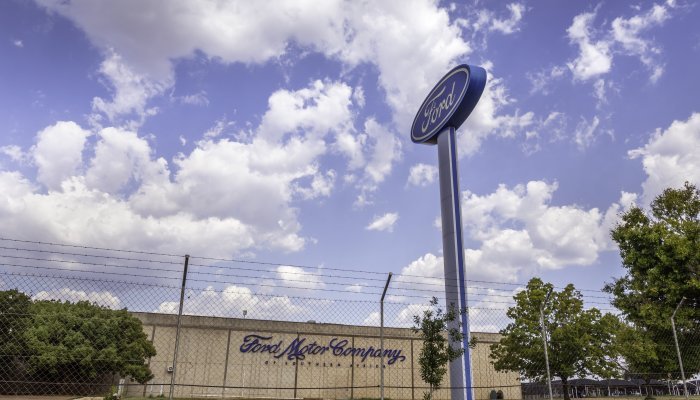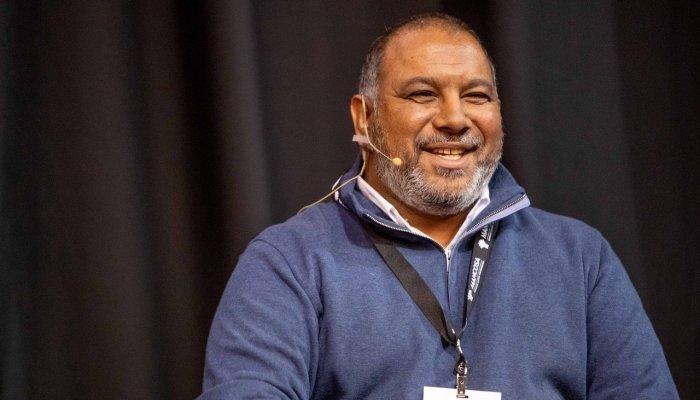The news that Ford was to invest $1.5 billion (R22.8 billion) in its Silverton plant was something of a good-news bombshell. Even though it represents only a small fraction of the R1.2 trillion that President Ramaphosa set as an investment target in 2019, it is nonetheless a big commitment by one of the global leaders in manufacturing. Could this investment be a sign that the de-industrialisation of South Africa could be reversed? And if so, how important would that be?
The short answers to these questions are ‘perhaps’ and ‘very’.
“Ford’s investment is a very big deal and a hugely positive move, but one swallow doesn’t make a summer,” cautions Professor Justin Barnes, who heads up the Toyota Wessels Institute for Manufacturing Studies (TWIMS), a non-profit specialist teaching institution that offers the GIBS PGDip and MBA (manufacturing specialisation), with both courses taught on an extended block release programme by GIBS faculty. “In many respects, South Africa currently is a fantastic place for manufacturers, although it also has some significant constraints. Perhaps the greatest of these is the dearth of the special kind of entrepreneur who is attracted by industry.”
First, let us remind ourselves why manufacturing remains a critical foundation for economic growth. As Nimrod Zalk, the Industrial Development Policy and Strategy Advisor at the Department of Trade and Industry has argued, “There is considerable accumulated evidence that manufacturing still functions as the heart of the economic development process.”1 Out of 13 countries that achieved high and sustained growth since World War II, 10 did so on the back of manufacturing. They are Brazil, China, Indonesia, Japan, South Korea, Malaysia, Singapore, Taiwan, Hong Kong and Thailand.2
And here’s the main point: there is a demonstrated correlation between GDP growth and manufacturing growth. “…manufacturing is the core driver of GDP growth and employment while other sectors – particularly many services sectors – are likely to grow on the basis of the growing demand derived from (and resulting from) an increasing GDP.”3
In short, manufacturing is the foundation of a growing economy, including the services sector. Its importance can be seen in the impact the country’s “premature industrialisation” (to use the words of Philippa Rodseth, Manufacturing Circle executive director) has had on employment. The sector was particularly hard hit by the lockdowns in 2020, and its share in total employment fell from 15% in 2008 to 9.9% in the fourth quarter of 2020.4
Economic policy plays a role
There’s no doubt that Ford’s investment was, in part, prompted by the willingness of the government to adapt its economic policy to accommodate the company, specifically the creation of a Special Economic Zone from O.R. Tambo International Airport to Silverton.
Kumaran Padayachee, CEO of Spartan SME Finance, agrees that economic policy is critical. Spartan provides finance to larger, established SMEs primarily for working capital, financing specialist equipment or growth. Spartan has noticed a distinct uptick in the number of applications from SMEs in the wider manufacturing space. But, in his view, this evidence of increased activity in the sector does not signal a new dawn.
“That’s not my sense at all,” he says. Having had the benefit of closely examining the applications that cross his desk, he believes there are likely several drivers for this phenomenon. One is pent-up demand after the lockdowns of 2020, while another is the fact that many companies went to the wall during 2020, also as a result of the pandemic. The survivors are gearing up to fill the gap, he speculates. The mining boom currently underway is likely to be a factor as well.
A revitalised manufacturing sector needs a growing economy, he argues, and that in turn will depend on the government’s ability to drive through the necessary reforms.
While the optimist might see signs that a reformist agenda is gaining traction in the Union Buildings, at best, progress will be grindingly slow. The latest version of the RMB/BER Business Confidence Index shows that business confidence remains weak, with manufacturing remaining well below the 50-point neutral level, suggesting that the post-Covid recovery is fragile.5
Continuing uncertainty about reliable electricity, and now water, is also a contraindication.
SA as a manufacturing destination
Professor Barnes comes at the issue from a different angle. As noted above, he argues that South Africa has many things going for it when it comes to manufacturing. Factory rents are cheap in dollar terms, as are utilities and other services, even though their quality and reliability have taken a dive in recent years. Wages, too, are low in dollar terms, and the rand/dollar exchange rate is basically favourable for exporting.
On the minus side, despite its low wages, the South African labour market is extremely inflexible. In his view, the use of bargaining councils to set wages for long periods is highly counterproductive, as is the insistence on a smooth upward curve in terms of wages and working conditions. The net impact of this inflexible labour market is that industrialists are constantly distracted by labour disputes and political machinations, and they are unable to amortise their assets sufficiently rapidly.
“It’s incredibly hard and expensive to operate more than one shift a day in certain sectors. The number of years it takes to amortise equipment is therefore too long,” he explains. “If you have to invest in new machinery and can write it off over two to three years, say, then probably the money will be forthcoming. If it’s going to take five years or longer, people are less confident about where the country will be and won’t commit the money. It’s all about the ability to drive the right kind of volumes, and that, in turn, depends on a labour market that accommodates high levels of capacity utilisation.”
Of course, the fact that we have one of the least productive workforces globally is also a negative factor.
A related issue is the way in which politics intrudes into business. Professor Barnes recounts the anecdote of the CEO of a global manufacturer, who was transferred from South Africa to India. He found India to be “such a nice experience” because he could concentrate on being a CEO and not a part-time politician. The result: a manufacturing operation that is globally competitive and reaching its full potential.
The importance of demand
The Manufacturing Circle estimates that if the sector could be made to grow and contribute an appropriate share of GDP relative to South Africa’s development stage (estimated to be 28-32%), it would not be out of the question to see 800,000 to 1.1 million jobs being added to the local economy. Manufacturing currently accounts for just under 12% of GDP.
Rodseth argues that growing demand both domestically and internationally is probably the biggest single factor underpinning any manufacturing recovery. Domestically, of course, our GDP has been in the doldrums for years, and now international GDP growth is also uncertain after the Covid body blow.
She agrees that the success of the automotive industry does point a way forward based on long-term strategic planning and collaboration between government and industry. Master plans for various industries, including textiles, furniture and steel, are in the pipeline. “There’s no silver bullet – one needs a bucket of interventions that are aligned with the dynamics of the particular industry,” she says. However, she notes that there are common constraints across industries. These include SABS, which has been misfiring for some time and obviously has a critical role to play in manufacturing, and high port tariffs that restrict the ability of exporters to compete globally.
“Removing those constraints would be a good start,” she says.
It’s all about the people
Of course, the use of incentives and special deals has a role to play and has clearly been successful in the South African automotive sector. However, Barnes argues that incentives (which are a function of economic policy) are not enough to create a growing manufacturing sector. Global manufacturers are valuable anchor tenants, but they need a strong domestic manufacturing ecosystem to support them. Global enterprises can also relocate relatively easily, but local manufacturers are there for the long haul. He maintains that for this group, manufacturing is more than a transactional activity. Their time horizons are often distant, and the returns they expect are relatively low. This requires an entrepreneur with an investment-focused mindset and a passion for the business.
“In successful countries, manufacturers partly invest for wealth creation and partly because they are building their community. They achieve an elevated status in that community and consequently see their business continuing down the generations. I worry that we don’t have enough of these kinds of people left in South Africa,” he adds. The problem is twofold – many of the existing industrialists are nearing retirement and are letting their businesses run down. For some, Covid lockdowns may have been the final straw. But whether the manufacturing sector can attract enough young entrepreneurs with the right outlook into the sector remains a huge question mark – without them, the sector will not grow and create the jobs we need.
“We could have a solid future if we could reverse the damage caused by the exodus of those vital people who want to invest for the long term because that’s what our manufacturing sector requires.”
1 Nimrod Zalk, What is the role of manufacturing in boosting economic growth and employment in South Africa?, Econ 3X3 (11 February 2014), available at http://www.econ3x3.org/article/what-role-manufacturing-boosting-economic-growth-and-employment-south-africa
2 World Bank, The Growth Report: Strategies for Sustained Growth and Inclusive Development (2008), available at https://openknowledge.worldbank.org/handle/10986/6507
3 Zalk, op cit.
4 Trade & Industrial Policy Strategies, The Real Economy Bulletin (Fourth Quarter, 2020), p 7.
5 The Index is available at https://www.ber.ac.za/BER%20Documents/RMB/BER-Business-Confidence-Index/?doctypeid=1050. See also Ed Stoddard, “Mixed South African economic signals as business confidence falters”, Business Maverick (11 March 2021), available at https://www.dailymaverick.co.za/article/2021-03-11-mixed-south-african-economic-signals-as-business-confidence-falters/?%40NZt28iQzU8K%2FOZVlswWadg%3D%3D




